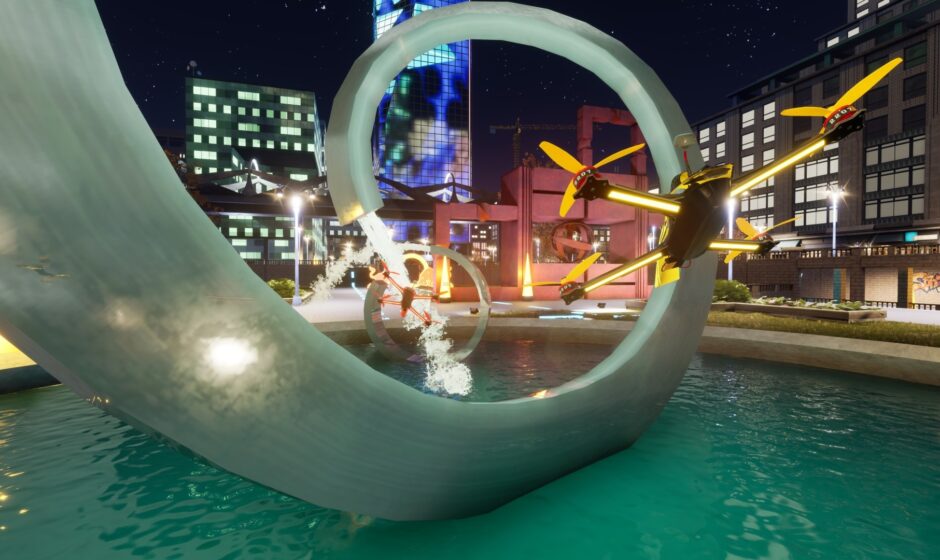The Drone Champions League (DCL) is the gold standard for competitive drone racing, where the best pilots from around the world test their skills on challenging tracks. If you aspire to compete at this level, having a well-tuned, high-performance drone is essential. In this guide, we’ll take you through the process of building a competitive drone for DCL races, covering everything from selecting the right components to fine-tuning for maximum speed and agility.
Why Building the Right Drone Matters
In drone racing, every second counts, and the difference between victory and defeat often comes down to the drone’s performance. A competitive racing drone should be:
- Fast: Capable of reaching speeds of over 100 mph (160 km/h).
- Agile: Able to maneuver quickly around tight corners and obstacles.
- Durable: Tough enough to withstand crashes without major damage.
- Optimized: Light and well-tuned to reduce vibrations and latency.
To achieve this, you’ll need to carefully select components that offer the perfect balance of speed, weight, and durability.
1. Choosing the Right Frame
The frame is the foundation of your drone, and its design can greatly affect the drone’s weight, durability, and flight characteristics. For DCL racing, a compact and lightweight frame with a sturdy build is ideal.
1.1. Materials
The most common material for racing drone frames is carbon fiber. Carbon fiber is preferred because it is incredibly strong and lightweight, providing the durability required for high-speed impacts while keeping the drone light for fast acceleration and agility.
1.2. Frame Size
For DCL racing, a 5-inch frame is standard. This refers to the size of the propellers the frame supports. The 5-inch size offers the best balance between speed, power, and agility, making it the go-to choice for competitive racing.
1.3. Durability vs. Weight
A lighter drone will accelerate faster and be more agile, but it also needs to be durable enough to survive crashes, which are inevitable in racing. Look for frames that provide reinforced arms and a low-profile design to minimize drag. Some racers choose frames with replaceable arms, allowing for quick repairs during competitions.
2. Motors: Powering Your Drone
The motors are what drive your drone’s propellers, and they play a critical role in determining the drone’s speed and maneuverability. Racing drones typically use brushless motors due to their high efficiency and power output.
2.1. KV Rating
The KV rating of a motor refers to how many revolutions per minute (RPM) it spins per volt. For drone racing, motors with a KV rating of around 2300-2800 KV are ideal for 5-inch propellers. A higher KV motor provides more speed but may sacrifice torque and efficiency, whereas a lower KV motor offers more torque, which is beneficial for tight, technical courses.
2.2. Weight and Durability
Just like with frames, the weight of your motors matters. Look for lightweight motors made from high-quality materials like aluminum or titanium. However, make sure that the motors are durable enough to withstand crashes, as damaged motors can significantly impact performance.
2.3. Matching Motors to Props
The motor’s KV rating should be matched with the size and pitch of your propellers for optimal performance. High KV motors paired with low-pitch props (which we’ll discuss next) result in faster acceleration, while low KV motors with higher-pitch props offer better control on technical tracks.
3. Propellers: Speed and Control
The propellers are the blades that generate lift and control your drone’s movement. For DCL racing, 5-inch propellers are the standard, but the pitch and material of the propeller can make a significant difference in how the drone handles.
3.1. Propeller Pitch
The pitch of a propeller is a measure of how far it would move through the air in one revolution. A higher pitch propeller generates more thrust and speed but requires more power, while a lower pitch propeller provides more stability and control.
For competitive racing, 3-blade propellers with a medium pitch (around 4-5 inches) offer a good balance of speed and handling. You may also want to experiment with different prop pitches depending on the course. For example, tighter courses might benefit from lower-pitch props for better control, while open, straight tracks might favor higher-pitch props for speed.
3.2. Material
Most racing drone propellers are made of plastic or polycarbonate. Polycarbonate props are more durable and resistant to damage, making them a good choice for high-speed collisions that can occur in DCL races. However, lightweight plastic props can offer better performance in terms of speed and responsiveness.
4. Flight Controller: The Brain of Your Drone
The flight controller (FC) is essentially the brain of your drone, responsible for stabilizing flight, processing inputs from the transmitter, and executing commands to the motors.
4.1. Processing Power
For competitive drone racing, you need a high-performance flight controller with a fast processor, such as an F7 or H7 chip. These controllers offer more processing power and lower latency, ensuring quick, responsive inputs during high-speed races.
4.2. Firmware Compatibility
Choose a flight controller that is compatible with popular firmware platforms like Betaflight or KISS. These open-source platforms offer advanced customization and tuning options, allowing you to adjust flight parameters to match your personal flying style and the specific race track.
4.3. Gyroscope and Accelerometer
A good flight controller should also have a high-quality gyroscope and accelerometer to maintain stability during fast turns and complex maneuvers. The latest flight controllers often feature 32kHz gyros, which offer more precise stabilization and smoother flight at high speeds.
5. Electronic Speed Controllers (ESCs): Control Your Power
ESCs manage the power delivered to the motors, translating the inputs from your flight controller into precise motor movements. In high-level drone racing, choosing the right ESCs can significantly impact your drone’s performance.
5.1. Amperage Rating
ESCs need to be able to handle the current drawn by your motors. For competitive racing drones, 30-45A ESCs are common, as they can handle the high power demands of brushless motors without overheating or failing during intense races.
5.2. DShot Protocol
When selecting ESCs, look for ones that support the DShot protocol. DShot is a digital communication protocol that provides more precise throttle control and faster communication between the flight controller and ESCs. This leads to smoother and more responsive flight performance.
6. Battery: Powering Your Drone
Your battery determines how long your drone can stay in the air and how much power it has available for high-speed maneuvers. Most competitive drones use LiPo (Lithium Polymer) batteries, which offer high energy density and fast discharge rates.
6.1. Voltage and Cell Count
For DCL racing, 4S (14.8V) and 6S (22.2V) batteries are the most common. 6S batteries provide more power and faster acceleration but can make the drone harder to control, especially for beginner pilots. If you’re new to racing, starting with a 4S battery might offer more manageable performance while you build your skills.
6.2. Capacity and Discharge Rate
The capacity of a battery is measured in mAh (milliampere-hours), and for racing drones, 1300mAh to 1800mAh is typical. The discharge rate (C-rating) indicates how quickly the battery can deliver power. A higher C-rating is preferable for racing, as it ensures that your motors receive a consistent flow of power during acceleration.
7. FPV Camera and Goggles: See What Your Drone Sees
Drone racing is all about First-Person View (FPV) flying, where the pilot sees through the drone’s camera feed. A high-quality FPV camera and goggles setup is essential for competitive racing.
7.1. FPV Camera
Look for an FPV camera with low latency and a wide field of view (FOV). Latency under 20ms ensures that the video feed is almost instantaneous, while a wide FOV (around 120-150 degrees) allows you to see more of the track, helping with navigation and quick turns.
7.2. FPV Goggles
Invest in a good pair of FPV goggles with high resolution and a comfortable fit. Look for features like adjustable IPD (Interpupillary Distance), DVR recording, and OLED displays for better picture quality. Brands like FatShark and Skyzone are popular choices among professional racers.
8. Tuning and Testing: Fine-Tuning for Maximum Performance
Once your drone is built, the next crucial step is tuning. This involves adjusting the PID (Proportional, Integral, Derivative) settings to optimize flight performance for your racing style and the track conditions. Many pilots use Betaflight to tune their drones, experimenting with different settings to find the right balance of control and responsiveness.
8.1. Regular Maintenance
Keep your drone in top condition by regularly checking for damage, especially after crashes. Replace worn-out props, check motor bearings, and ensure all electrical connections are secure.
8.2. Practice
Lastly, practice flying your drone on tracks similar to those used in DCL races. Get used to how your drone handles under different conditions, and continuously refine your tuning to gain that extra competitive edge.
Conclusion
Building a competitive drone for the Drone Champions League requires careful selection of components, fine-tuning, and plenty of practice. By choosing the right frame, motors, props, and electronics, you can create a drone that excels in speed, agility, and durability. With the right setup, you’ll be well on your way to competing at the highest level of drone racing.



